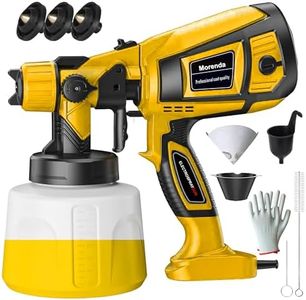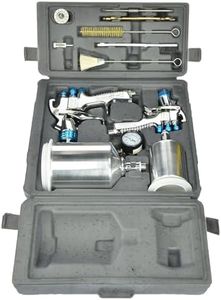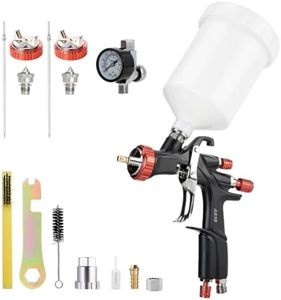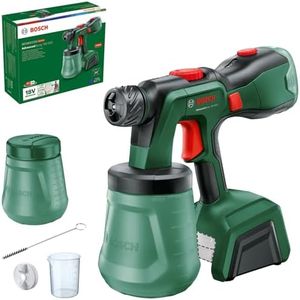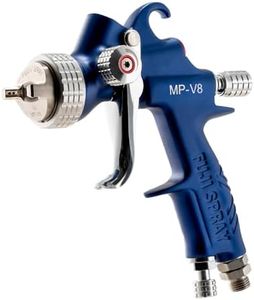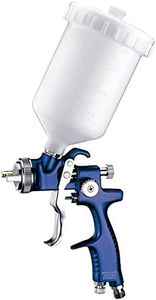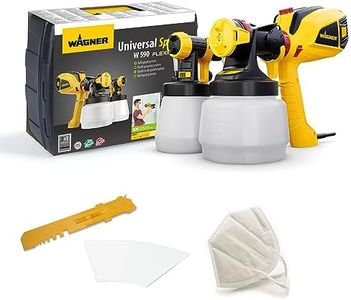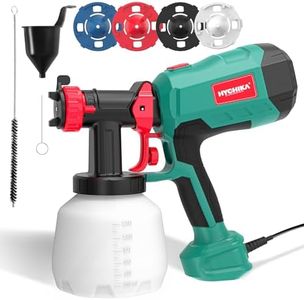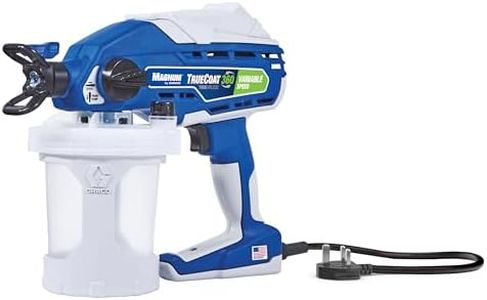We Use CookiesWe use cookies to enhance the security, performance,
functionality and for analytical and promotional activities. By continuing to browse this site you
are agreeing to our privacy policy
10 Best Paint Gun Sprayer
From leading brands and best sellers available on the web.Buying Guide for the Best Paint Gun Sprayer
Choosing a paint gun sprayer is all about matching the tool to the type of projects you plan to tackle. Whether you’re working on furniture, a car, or home walls, the paint sprayer you select will impact the quality and efficiency of your work. Understanding the key features helps you avoid frustration and get the best results. Let’s go over the important specifications that will guide your choice.Type of SprayerPaint sprayers come in different types, mainly airless, HVLP (High Volume Low Pressure), and compressed air. Airless sprayers use high pressure to spray paint quickly and are great for covering large surfaces like fences or walls. HVLP sprayers use lower pressure and are ideal for detailed work or furniture as they give you more control and a fine finish. Compressed air sprayers use an air compressor and are versatile but can be messier and waste more paint. Pick the type based on what you intend to paint most often—bigger, flat areas might need airless, while finer tasks call for HVLP.
Power SourceSprayers can be powered by electricity, batteries, or compressed air. Electric models are good for steady use and can handle most jobs around the house. Battery-powered sprayers offer portability but may have limited runtime between charges. Compressed air models need a separate air compressor, which adds cost and bulk. Choose the power source that fits where you’ll use the sprayer most often—indoors, outdoors, or places with limited access to power.
Paint Flow ControlFlow control refers to how much paint the sprayer can release at once, often adjustable with a dial or knob. Lower settings let you apply thin coats, which is good for detail work or delicate surfaces, while higher settings allow for quick coverage of big areas. Look for a model with adjustable flow so you can tailor the output to your project size and the type of paint you’re using.
Nozzle SizeNozzle size controls how thick or thin the paint stream is, and different sizes work best for different projects and paint types. Small nozzles are good for thin materials like stains and finishes, giving a fine mist for precise work. Larger nozzles handle thicker paints, like latex, without clogging. Many sprayers include interchangeable nozzles for versatility. Think about the types of paints and finishes you’ll use and pick a sprayer that accommodates those nozzle sizes.
Paint CapacityPaint capacity refers to the size of the paint container attached to the sprayer. Smaller containers are lighter and easier to handle for detail jobs, but need refilling more often during big projects. Larger containers hold more paint for continuous work, best for bigger surfaces, but can be heavier. Decide how much you value light weight and ease of movement versus fewer interruptions for refilling.
Ease of CleaningAfter painting, cleaning your sprayer prevents clogs and keeps it working well. Some models have quick-clean features or detachable parts that make washing easy, while others are more involved. If you plan to use your sprayer often or switch between different types of paint, prioritize one that’s simple to clean. This helps prolong the tool’s life and saves time after each project.

